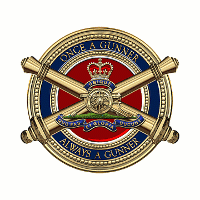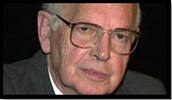| |
|
|
|
|
| |
|
|
|
|
| |
|
|
|
|
| |
|
AUSTRALIAN GUNNER
OBITUARY RESOURCE
|
|
|
| |
|
|
|
|
| |
|
|
|
|
| |
| |
| |
|
 |
|
|
|
| |
|
The Australian - The Nation Section
October 29, 2017
|
|
| |
| Printed Version |
| |
 |
|
The former Governor-General Sir Ninian Stephen died aged 94. Government House said in a statement Sir Ninian, who was governor-general from 1982 to 1989, died in Melbourne.
“Our nation is a better place due to his service and he will be most warmly remembered,” Governor-General Peter Cosgrove said.
Prime Minister Malcolm Turnbull paid tribute to a man who brought “gentle dignity to the role”.
“A former Governor-General, Justice of the High Court of Australia, Australian soldier and officer, Sir Ninian’s long and highly distinguished career was dedicated to the service of the Australian public,” Mr Turnbull said in a statement.
|
He represented “the very best of Australia while encouraging the very best from all Australians”, he said. “Australia will remember Sir Ninian for his humility, his intellect, and his lifelong commitment to justice and the rule of law.”
Sir Ninian was born in Oxfordshire, England, in 1923, and moved to Australia as a 17-year-old. He studied to become a lawyer at the University of Melbourne, before deferring his studies to join the armed forces for the Second World War. He served in New Guinea and Borneo.
“There are very few honours that Sir Ninian doesn’t have to his name — he’s been knighted five times, was a Justice of the High Court of Australia and Supreme Court of Victoria, member of the Privy Council and Australian Ambassador for the Environment,” Mr Turnbull said. Sir Ninian was also involved in the Northern Ireland peace talks and the International Criminal Tribunal for the Former Yugoslavia.
“On behalf of the Government and the people of Australia, I send our heartfelt condolences to his wife Lady Stephen and their family at this sad time.”
In December 1941, following the end of his first year at University, Stephen enlisted in the Citizen Military Force to serve part-time in the Melbourne University Regiment.
Following Japan's entry into the war, Stephen completed full-time military training from 8th December 1941 to 15th February 1942 and was then posted to the 10th Field Regiment, Royal Australian Artillery, serving in Western Australia.
He subsequently transferred to the Second Australian Imperial Force. In late 1943, Stephen transferred to the Royal Australian Engineers, serving in New Guinea from April to August 1944 with the 43rd Australian Water Transport Company.
He then attended courses, culminating in a commissioning course in April 1945. As a lieutenant, he served in the 41st Australian Landing Craft Company in New Guinea and New Britain.
In August 1945, he was posted to Labuan, Borneo, arriving after the war's end and serving there until January 1946. After returning to Australia, he was discharged on 5th February 1946. |
| |
|
|
| |
|
|
|
|
|
| |
|
|
|
|
|


